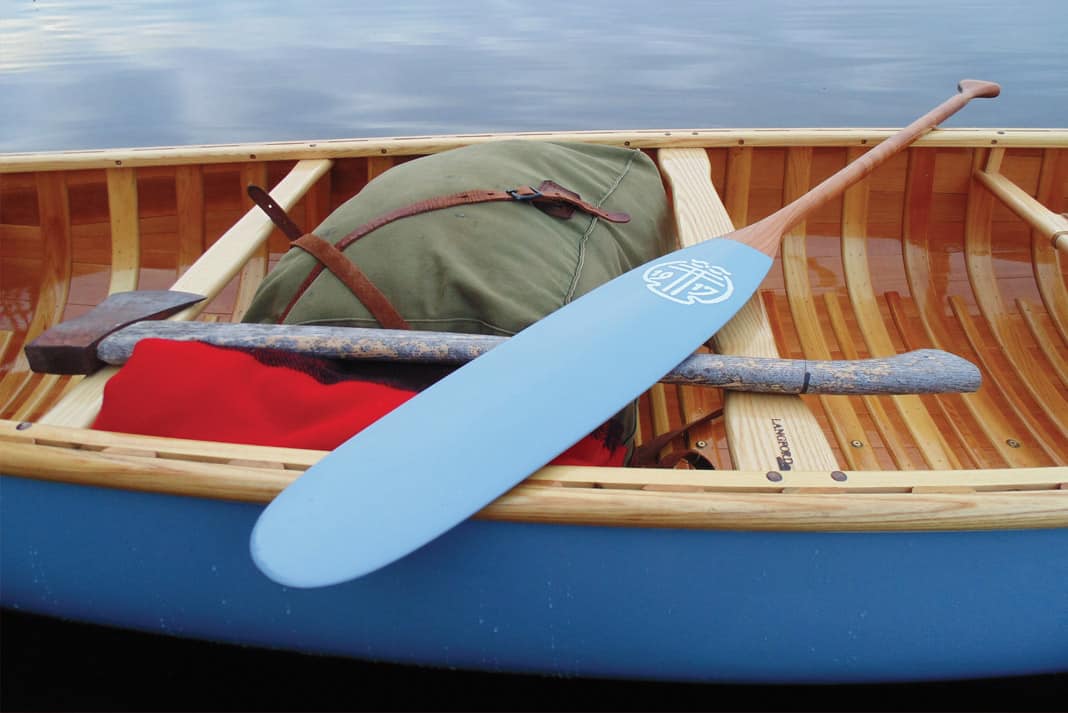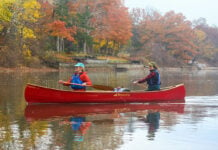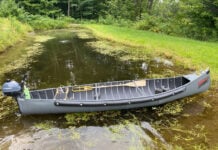Tom Thomson was just 39 years old when his body was found in Algonquin Provincial Park’s Canoe Lake
Though he’s now arguably Canada’s most celebrated painter, he was then only five years into a new style of painting that would change how a country thought about itself and its wilderness. His career may have been cut short, but his legacy has endured. To celebrate, Langford Canoe is marking the centenary of his death with a limited run of just eight special edition Tom Thomson canoes.
Brent Statten Of Langford Canoes Says The Actual Canoe That Thomson Owned Has Been Lost To Time, Although Photographs Suggest It Was A 16-Foot Chestnut Guide Cruiser
Langford’s modern incarnation is intended to approximate and improve upon the canoe Thomson would have paddled on his sketching trips in the 1910s. The materials will be true to the period, including red cedar planking, ash gunwales and rawhide seats. Statten says Langford designers haven’t tried to mimic the lines precisely, but instead have called on the company’s 77 years of experience to improve performance.
“We think of it as taking artistic license,” says Statten.
Two aesthetic aspects that remain are re-curved stems and paint color. Langford mixed marine grey and cobalt blue to recreate the dove grey that Thomson had painted his canoe.
And of course there’s no fiberglass or carbon on the hull, only a layer of waterproofed canvas. Statten says the canvas adds 10 to 15 pounds compared to a cedar and composite shell, but given the commemorative nature of the model, canvas was the only way to go.
“For aficionados, canvas makes it a true canoe,” says Statten. “Canvas creates a functional piece of art. It’s a quieter, softer canoe. When you paddle canvas you feel more connected to the water.”
Langford Will Make Up To Eight Of These Canoes, Each One Taking About 100 Hours To Build
The first one out of the shop has been reserved for an end-ofsummer fundraising raffle at the Huntsville Hospital Foundation. Langford Canoe is based in Dwight, Ontario, between the Town of Huntsville and the main western access point to Algonquin Park.
“We didn’t want to just ride the coattails of the anniversary,” explains Statten. “The Huntsville hospital serves Algonquin Park, so it’s a good fit. Thomson remains an ambassador for canoeing and the wilderness. We want to help perpetuate his legacy of drawing eyes toward the wilderness and paddling.”
That ability to draw eyes toward the wilderness had only just begun by the time Thomson died in 1917. He didn’t start to spend seasons in Algonquin until 1912, working as a guide and ranger in the summer and taking solo sketching trips in the spring and fall.
To explain Thomson’s approach, David Huff, curator at the Tom Thomson Art Gallery in Thomson’s hometown of Owen Sound, cites a letter from A.Y. Jackson, a painting partner and future member of the Group of Seven. Jackson wrote: “Not knowing all the conventional definitions of beauty, he found it all beautiful: Muskeg, burnt and drowned land, log chutes, beaver dams, creeks, wild rivers and placid lakes, wild flowers, northern lights, the flight of wild geese and the changing seasons.”
Roy MacGregor, born at the eastern gate of Algonquin Park, is the author of 40 books including, Northern Light: The Enduring Mystery of Tom Thomson
As MacGregor sees it, a commemorative canoe is fitting for a man that canoeists owe a great debt too.
Tom Thomson had a great deal to do with the romance of the canoe,” says MacGregor. “When he began painting around Algonquin Park he was ridiculed and dismissed. But eventually Canadians began seeing how true the paintings were to the landscape. Once trains, steamships and crude roads opened up the North, they began to use the canoe to get to those places that were now a part of their imagination. Thomson made us fall in love with the country’s most dominant feature—the wilderness.
To explore the wilderness in a Tom Thomson commemorative canoe get one of only 1,000 tickets for the Tom Thomson Commemorative Canoe Raffle at huntsvillehospitalfoundation.ca. Or pick up one of the other seven for $6,300, $2,743,200 less than what was paid in 2009 for Thomson’s 1917 painting, Early Spring, Canoe Lake.
Ian Merringer is a freelance writer and former editor of Canoeroots magazine. He lives with his family 295 kilometres south of Canoe Lake.








